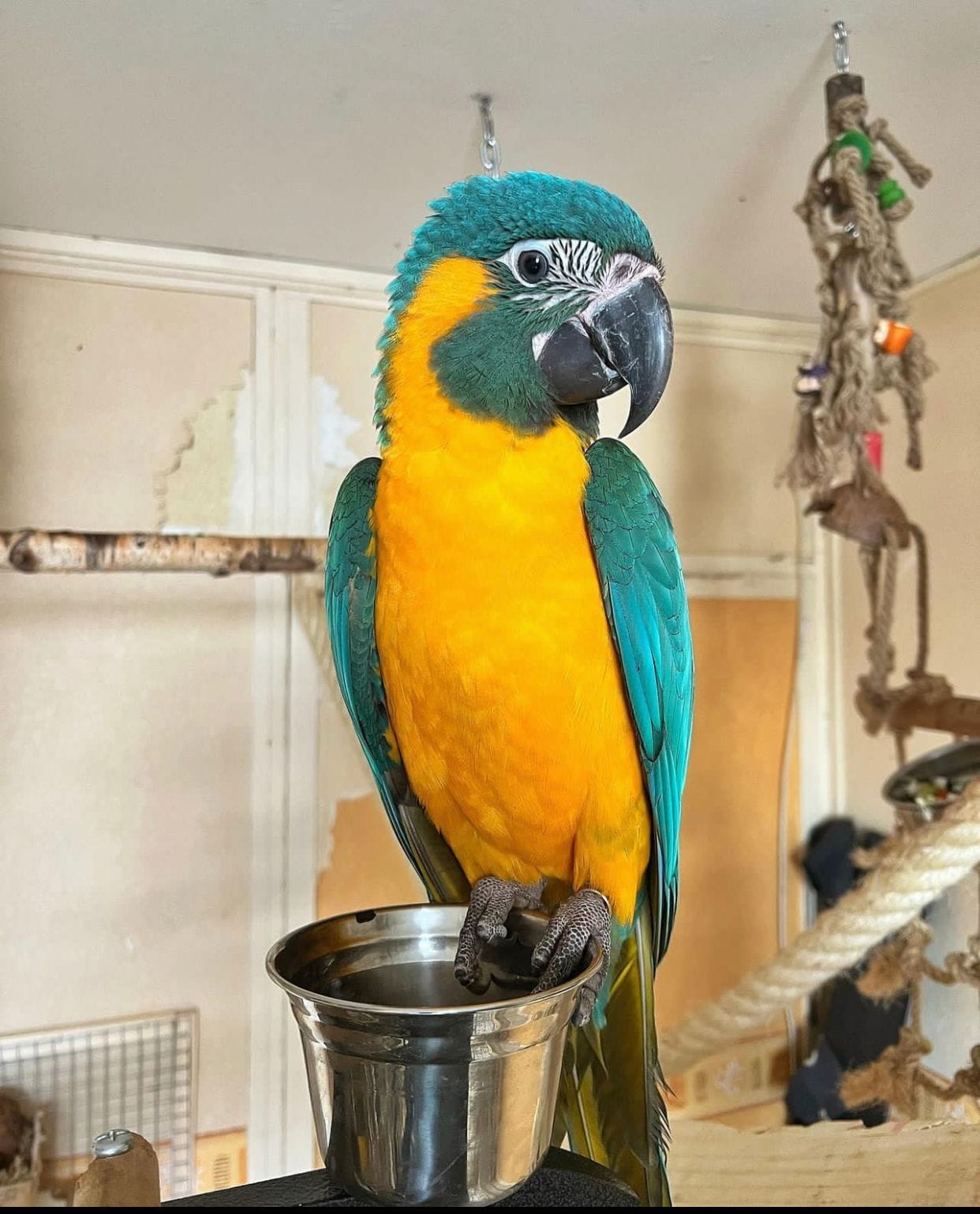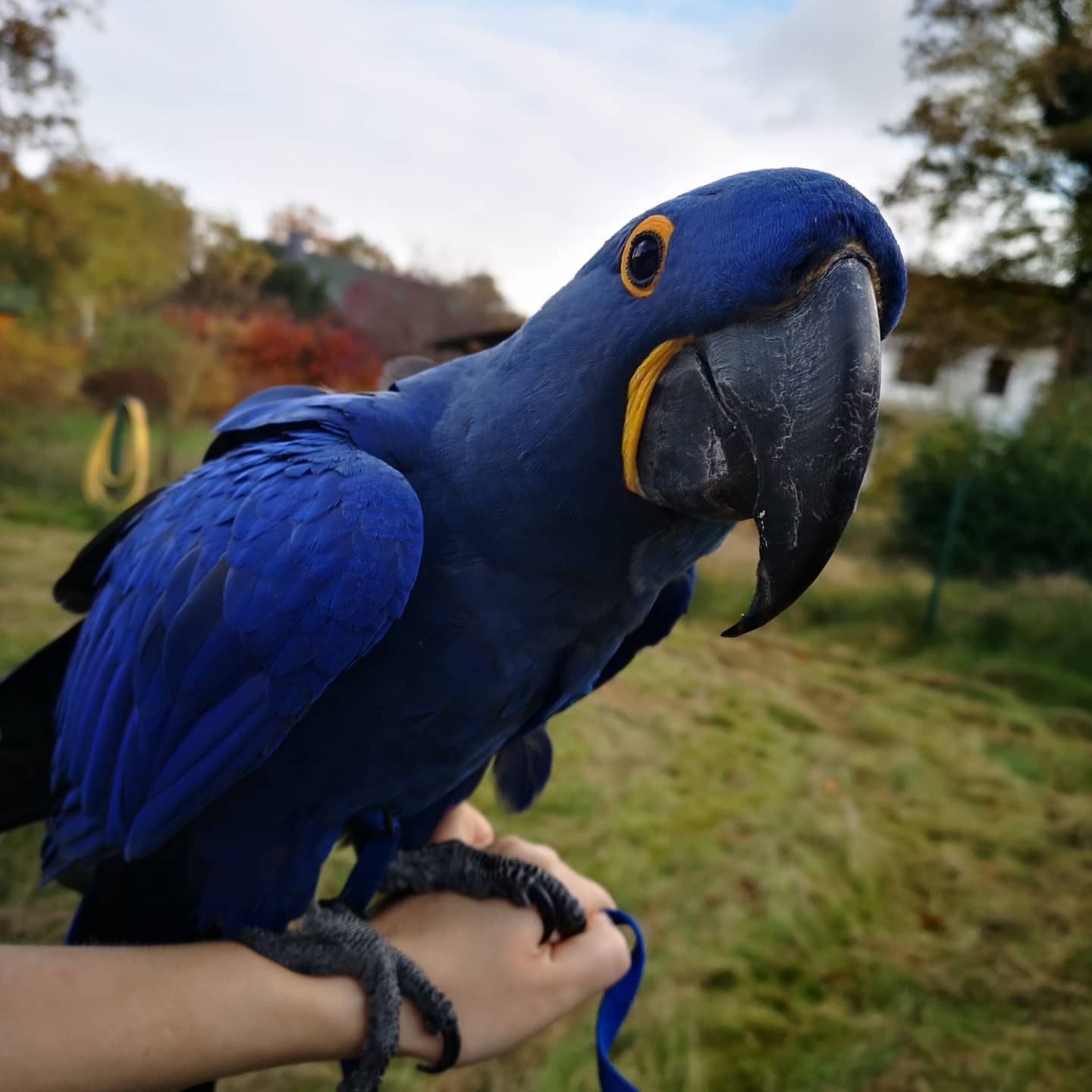See What Great Green Macaw Tricks The Celebs Are Making Use Of

Kasey
2025-02-12 16:11
8
0
본문
 Information Regarding the Great Green Macaw
Information Regarding the Great Green MacawGreat green macaws, despite their vibrant beauty, are threatened. They are one of the most endangered species in the field of aviculture, and their habitat is under threat from the destruction of forests.
MRN is working to protect their natural habitat and to create corridors between protected areas. MRN works with local communities to inform them about the importance of these species.
Habitat
The great green macaw, despite being among the most beautiful and intelligent birds in the world has faced numerous threats in the last few decades. In fact, the species is listed as critically endangered by BirdLife International. Habitat loss, great green macaw unsustainable logging, and conversion of agricultural land have drastically reduced the birds' numbers and range. Farmers often shoot these beautiful birds since they are viewed as crop pests, and they also capture them to supply the pet trade.
In the wild the beautiful birds live in humid lowland forests and the edges of forests. They build nests in tree cavities and feed mainly on mountain almond trees Dipterix panamensis. They are renowned for living in large family groups even during the breeding season.
Their tail feathers and wing feathers are long, with a pointed tip for efficient flight through the canopy of the forest. Their beaks are huge and robust, allowing them open up the hard shells of nuts, seeds and bark. They also enjoy eating fruits, roots and flowers. The great green macaw parrot cost is a vocal bird that makes a variety of calls to communicate with other members of their group and with potential partners. Their calls can be heard as screeches, whistles, and squawks.
These amazing birds serve crucially in their ecosystems as seeds dispersers. This species' presence in the wild contributes to the health and diversity of rainforest habitats. They are a vital component of the food chain, and are attracted by other animals, such as insects and monkeys that help spread seeds of trees and other plants.
Fortunately Non-profit organizations are working to protect the habitat of these beautiful birds. They purchase land to create reserves, and collaborate with the local communities to encourage sustainable livelihoods. They are using conservation methods to limit human-macaw interaction and provide educational opportunities for people to learn more about the beauty of this bird. This magnificent bird in its natural habitat is a truly unique experience.
Diet
The great green macaw is a stunning bird that can be found in the rainforests of Central and South America. They spend most of their time in small groups, high up in the trees, eating seeds and nuts. Their strong beaks are used to break open the tough shells. As a result, they are important seed dispersers and help maintain healthy forests. They also play a crucial role in the ecosystem by providing food for other threatened species like the Scarlet Macaw or Yellow-naped Amazon.
This large parrot sports a predominantly green body which is complemented by splashes of red on the forehead, cheeks and lower back of the wings. They are also known to have a patch of untreated skin on the top of their head, as well as a long beak that has a sharp curve. The curve is an adaptation that allows them to break open the hard shells of seeds and nuts.
In the wild, they eat a variety of things, including bark, seeds and roots, as well as flowers, bulbs and fruits. The fruit of the Almendra Guayaquilensis Mountain Almond Tree is a popular choice. They also go to clay licks, which are areas where birds lick clay, believing that it offers positive health benefits for them.
Great green macaws are in danger in the wild due to habitat loss which means they are unable to obtain enough food to sustain themselves. They are also captured illegally to be sold as pets.
The good news is that numerous organizations are working to safeguard this magnificent bird and ensure it has a safe home in the wild. World Land Trust, as an example, is a supporter of reserves like the Rio Canande Reserve, in Ecuador where artificial macaw nests have been set up.
It is crucial for those who keep the birds as pets to allow them plenty of space and provide them with the same diet they would consume in the wild. Fresh fruits and Great Green Macaw veggies should be provided, especially those that are rich in vitamins, such as sweet potatoes, carrots, and bananas. It's also a great idea to let them out of their cages for about 2 hours each day to play, stretch their wings, around and play. This will keep them healthy and happy.
Nesting
The great green macaw nests in the crevice or cavity of a tree usually in the almendro's trunk (Dipteryx panamensis) or tit o (Sacoglottis trichogyna). They also use different trees, including beach almond (Dipteryx Oleifera), caivo (Prioria copaifera) and caobilla (Carapa nicaraguensis). A pair can lay up to two eggs. The incubation time is about 28 days. Once the chicks are fledged and leave the nest, they go on their own.
The most significant threat to the species is human-caused habitat loss, particularly through logging and agricultural. In Costa Rica, where the great green macaw is classified as endangered, there has been a dramatic decrease in the population because of deforestation, specifically in the 1980s. Conservation efforts are being made to save the species, but the challenge is immense.
In addition to the preservation of habitat The most important thing is education. Outreach programs at schools and communities can help people realize the importance of the bird and inspire people to be involved in conservation efforts. Eco-tourism is a different tool that provides economic incentives for people to protect great green macaw habitat.
Research has proven that there aren't enough breeding pairs to sustain and increase the population. This is why it's important to establish protected areas and reserve corridors in which the bird can find suitable mates. Conservation efforts include captive breeding and creating artificial nests that will lower the risk of predation.
Poaching is a serious concern for the great green macaw (my company) especially in Central America where the birds are often killed because of their attractive markings or are viewed as agricultural pests and shot. ProBosque is a WLT-supported group in Ecuador collaborates with local communities to to protect the species in the Rio Canande Reserve as well as the Cerro Blanco Wooden Reserve. The project investigates the impact of artificial breeding in this fragile area. The results of this study are expected to lead to the creation of new, better designs for nests that could reduce the risks of predation from a variety species. These innovations will be a major improvement in the fight to save this majestic bird.
Breeding Season
The breeding season of the great green macaw runs between January and August with peaks in February and May. During this period, the female will select a nesting spot in the forest canopy. This is usually a tree belonging to the Dipteryx species. The female will lay 2 to 3 eggs, which will be incubated between 26 and 28 days. Both parents will feed the chicks. A typical first-year survival rate is 65%.
Due to the heightened risks of predation and unstable habitat, it is difficult for the great green chestnut fronted macaw to sustain a stable population. To help combat this, conservationists have constructed artificial nests to place in secure, safe trees. These nests protect the young against predators and bad weather. They also provide a chance for humans to observe the performance of the birds and their breeding.
Great green macaws are typically seen in pairs, but they can be found in small groups of 10 to 15 individuals too. The lowland rainforests of tropical lowlands, from eastern Honduras up to northwestern Colombia and west Ecuador, are home to these birds. The birds live primarily in the forest canopy, but they also frequent foothill forests. They consume seeds and fruit and sometimes hard-shelled nuts shells.
Many non-profit organizations are committed to preserving the natural habitat of the great green severe macaw. They work with local communities and buy land to promote sustainable farming and other income sources. They also monitor macaws in order to identify threats and to mitigate them.
The amazing green macaw in its natural environment is an incredible experience for tourists who visit Costa Rica. Birdwatching is offered by many eco-lodges, tour operators and eco-lodges. Tourists are given the chance to view these magnificent birds while learning about their habitats.
With the possibility of habitat loss caused by logging and mining, the population of the great green macaw keycaps is declining. Conservationists are helping to make an impact by establishing protected areas and ensuring that the macaw is able to travel between them. They also are establishing breeding programs and encouraging community involvement to save the Buffy macaw bird for sale and other species.


댓글목록0
댓글 포인트 안내